Picture this: It’s a sunny day, perfect for a ride on your Harley. But as you rev up the engine, you hear unsettling noises. Could it be a problem with your inner primary bearing? Understanding these Harley inner primary bearing failure symptoms, causes, and solutions can help prevent costly repairs and keep your ride smooth. Ready to learn more? Let’s roll!
Key Takeaways
- Unusual noises, metal shavings and clutch issues are all signs of inner primary bearing failure on a Harley.
- Regular maintenance & proper riding techniques can help avoid Damage, while upgrading components can revitalize your bike.
- Replacing an inner primary bearing costs around $320-$600, worth it to keep your ride running smoothly!
Brief Overview of Inner Primary Components
The inner primary of a Harley-Davidson motorcycle is a crucial component that houses and protects various key parts of the bike’s drivetrain. This assembly is essentially the guardian of several critical mechanical elements. Here’s a brief overview of its main components:
- Inner Primary Case: This is the outer shell that encloses and shields the inner workings. It’s designed to protect against debris and external elements.
- Inner Primary Bearing: This bearing plays a pivotal role in ensuring smooth operation of the primary drive system. It supports the primary shaft, allowing it to rotate freely.
- Compensator Sprocket: This component helps to balance and absorb the engine’s torque fluctuations, ensuring a smooth power transfer to the drivetrain.
- Clutch Assembly: Located within the inner primary, the clutch assembly engages and disengages power from the engine to the transmission.
- Primary Chain: This chain transmits power from the engine’s crankshaft to the clutch hub in the transmission.
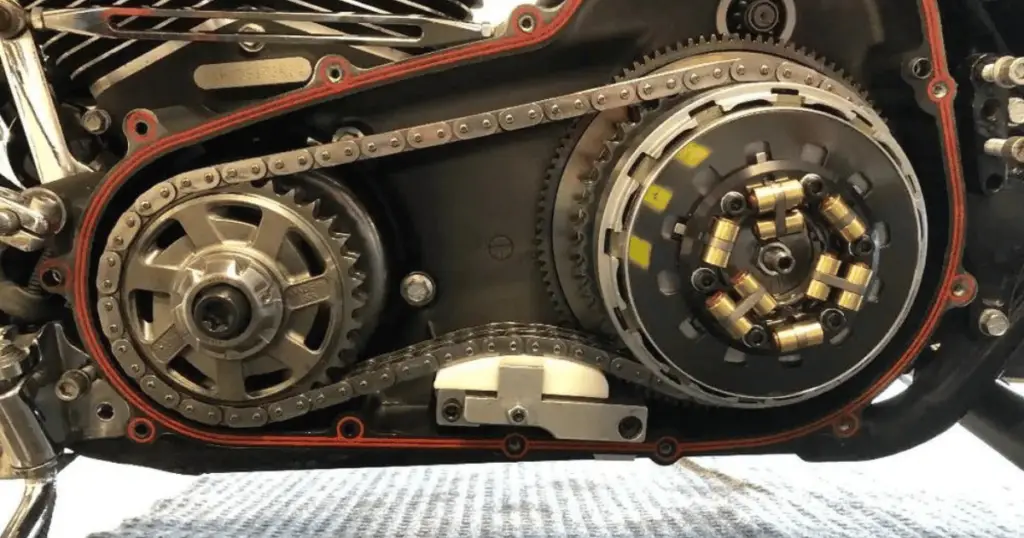
How Does The Compensator Sprocket Affect The Inner Primary Bearing?
The compensator sprocket and the inner primary bearing in a Harley-Davidson motorcycle are closely interrelated in the bike’s drivetrain, and the condition of one can significantly impact the other.
The compensator sprocket’s primary role is to absorb and even out the engine’s torque fluctuations before they are transmitted through the primary chain to the clutch and gearbox. It acts as a buffer, reducing stress and shock to the drivetrain components, particularly the inner primary bearing.
In other words, when the engine revs, torque is generated unevenly, which can lead to jarring and jerking movements. The compensator sprocket helps to even out these forces, ensuring a smoother transfer of power. This not only enhances ride comfort but also significantly reduces wear and tear on the inner primary bearing, prolonging its lifespan.
However, when the compensator sprocket begins to wear out or fail, it can no longer effectively mitigate these torque fluctuations. As a result, the inner primary bearing is subjected to increased stress and shock loads. Instead of a smooth transition of power, the bearing experiences abrupt and uneven forces. This heightened stress can lead to premature wear and eventual failure of the inner primary bearing.
Signs of A Worn Compensator Sprocket (and What To Do First)
Being able to identify the early signs of a damaged compensator sprocket can save you from more significant issues down the road. Let’s explore the key symptoms that signal trouble, ensuring you’re equipped to keep your Harley in top condition.
- Unusual Noises: Listen for clunking or rattling sounds, particularly during startup or under engine load.
- Hard Starting or Backfiring: Difficulty in starting the bike or experiencing backfiring can indicate compensator sprocket issues.
- Increased Vibration: A noticeable increase in vibration or roughness in the ride suggests a problem.
- Visual Wear: Check for visible signs of wear or damage on the sprocket teeth.
- Performance Decline: Be aware of any sluggishness or reduced responsiveness, especially during acceleration.
What Are The Usual Inner Primary Bearing Failure Symptoms?
Sensing trouble with your Harley’s inner primary bearing doesn’t require a sixth sense; it’s all about tuning into your bike’s signals. From eerie noises to metal shavings, these harbingers of inner primary bearing failure are hard to miss.
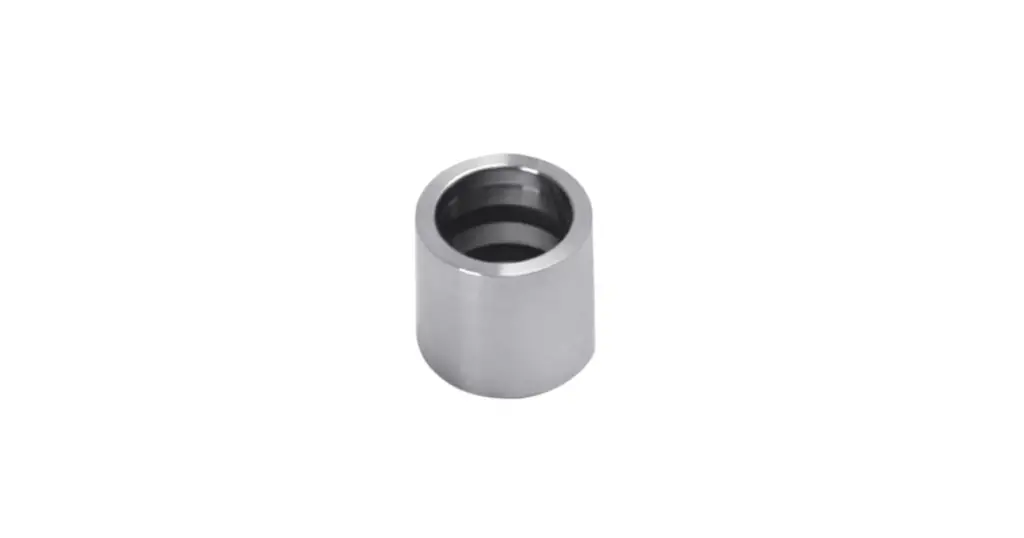
Stay with us as we delve into these symptoms more thoroughly.
Unusual Noises
Imagine your Harley sounding like a grumpy old man, churning out a series of rumbling, whirling noises. This symphony of sounds is your bike’s SOS, signaling a potential issue with the inner primary bearing. Keep an ear out for these distress signals, especially when your engine is idling or you engage the clutch.
Metal Shavings
Ever found glittery metal shavings in your Harley’s inner primary? That’s not your bike preparing for a rock concert. Metal shavings are like bread crumbs, pointing you towards a worn-out or damaged bearing. Ignoring these shiny signs can lead to more serious damage to your bike’s drive components.
Therefore, spotting this metallic debris calls for immediate action unless you’d like to find yourself on the receiving end of an engine rebuild.
Clutch Issues
If your Harley’s clutch is acting like a rebellious teenager, refusing to engage and disengage smoothly, your inner primary bearing might be the culprit. Clutch issues can lead to more extensive damage to the clutch hub bearing, inner hub, and outer basket, affecting your bike’s performance and ride quality.
Therefore, don’t let a malfunctioning clutch or a damaged shifter shaft seal spoil your journey.
Related to this section: Harley 6 Speed Transmission Problems? Help Is Here, Trust Me
How To Inspect Your Harley’s Inner Primary Bearing
Equipped with knowledge about the symptoms, it’s time to investigate how to inspect your Harley’s inner primary bearing within the primary case. Think of it as a mini health check for your bike. Ready?
Removing the Primary Cover
Think of this step as getting access to the heart of your Harley, the outer primary cover. With a Torx 27 wrench or driver in hand, carefully unscrew the bolts, tap the cover gently with a rubber mallet if it’s stuck, and voila! The primary cover is off. Remember, it’s all about finesse, not force.
Checking the Bearing and Race
Once you’ve revealed your Harley’s inner workings, it’s time to do a thorough inspection of the bearing and race. It’s like checking your bike’s pulse. Listen for weird noises, check for metal debris in the primary oil, and look out for any oil leakage around the inner primary area. If you notice any unusual signs, it might be time to get a new bearing.
Assessing the Primary Chain Tensioner
The primary chain tensioner is like the unsung hero, maintaining harmony between the engine and transmission. By ensuring the optimum chain tension, it helps the inner primary bearing function smoothly. Thus, any rattling or clicking noise from the primary chain area calls for attention to your primary chain tensioner.
It’s also worth noting that the primary chain tensioner can also be referred to as the compensator, which has its own set of problems.
What Causes Inner Primary Bearing Failure?
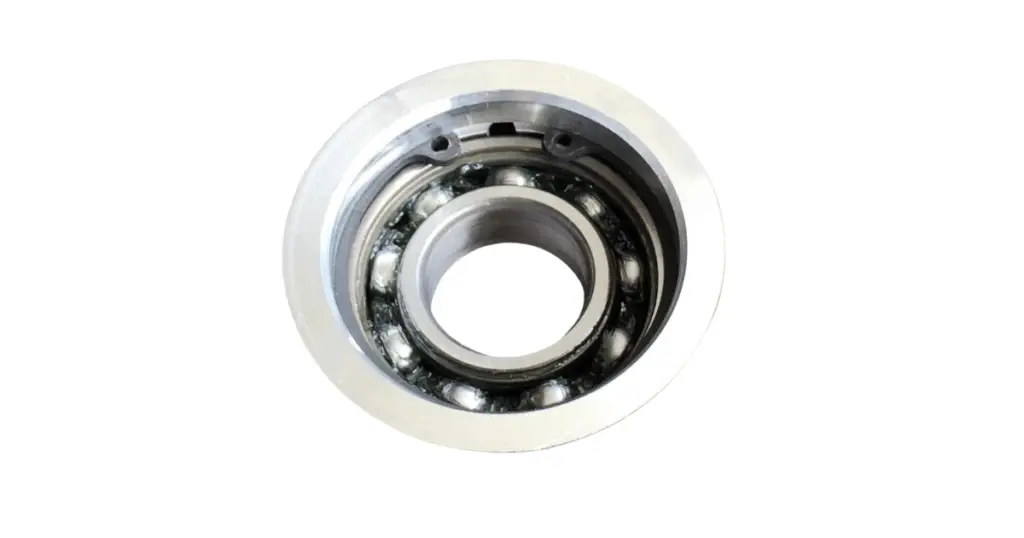
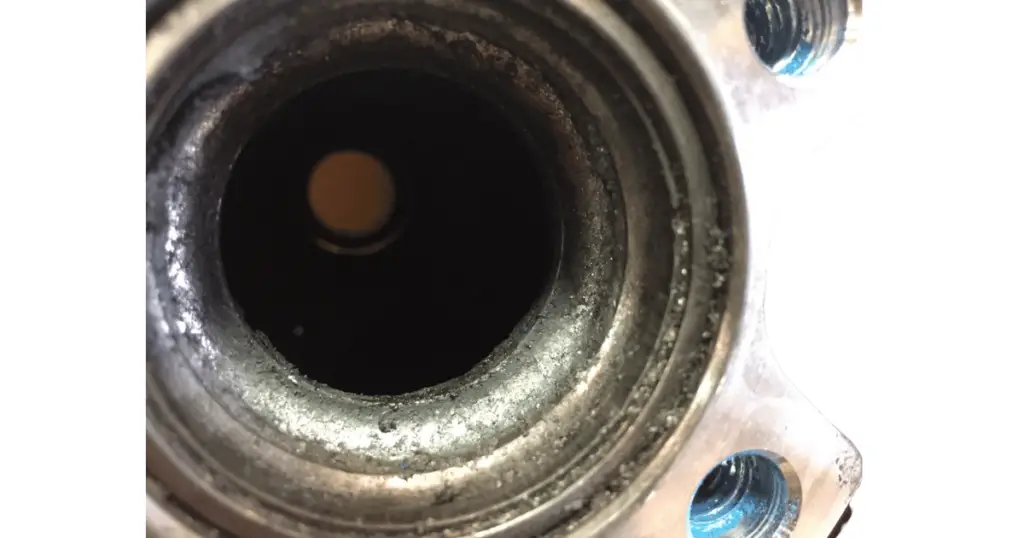
Ever wondered what could be the villain in our inner primary bearing’s story? From poor maintenance to manufacturing defects, there are various reasons why your inner primary bearing might be having a tough time. Let’s delve into these causes to understand better how to prevent bearing failure.
Poor Maintenance
Neglecting your Harley’s inner primary bearing is like forgetting to water a plant. Without regular care and maintenance, it can wear out faster, generating more heat and friction.
Remember, consistent care and maintenance play a significant role in preventing bearing failure.
Read next: Best Oil For Harley Transmission And Primary Gets Revealed
Manufacturing Defects
Just like a tiny pebble can cause a ripple in a pond, minor manufacturing defects can cause major trouble for your inner primary bearing. Defects in bearing design and quality can lead to premature wear and tear, affecting the bike’s performance. But fear not, brands like Harley-Davidson continuously work to minimize such manufacturing flaws.
Aftermarket Parts
While aftermarket parts can be a great way to customize your Harley, not all parts are created equal. If they don’t fit right or aren’t installed properly, they can stress your inner primary bearing, leading to premature failure.
Choose wisely and bear in mind that thorough research can prevent potential issues.
Abusing The Bike
Riding your Harley too hard or putting too much weight on it can strain the inner primary bearing. It’s like asking a marathon runner to sprint continuously. Ride responsibly and don’t forget, your Harley also requires regular care and attention!
How To Repair or Replace a Bad Inner Primary Bearing
Repairing or replacing the inner primary bearing requires specific tools and attention to detail. A race puller/installer tool is essential for handling the bearing race, and a hydraulic press is recommended for the bearing itself. Additionally, it’s crucial to inspect related components like the clutch hub and compensator assembly for any signs of wear or damage during this process. But let’s breakdown the step-by-step a little bit:
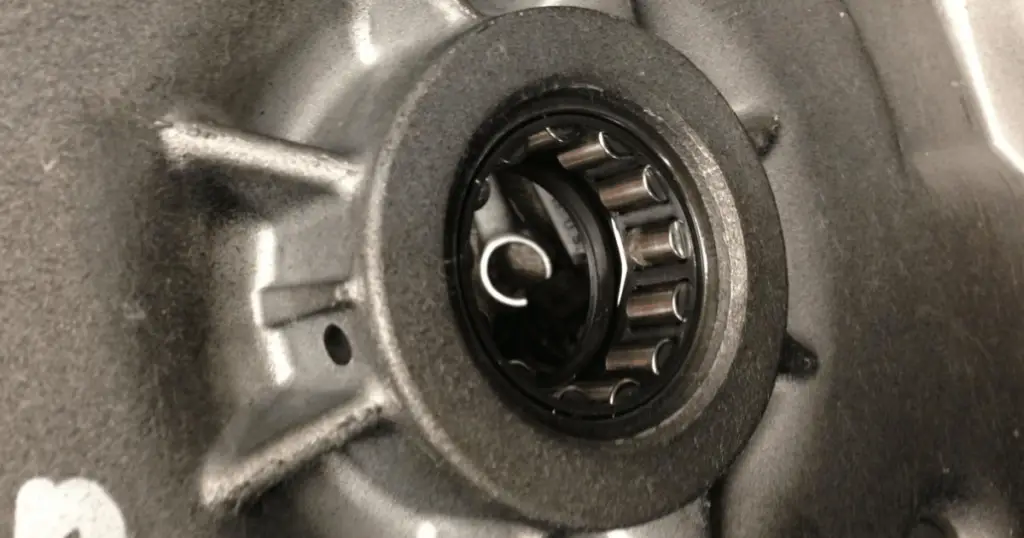
Selecting a Replacement Bearing
Choosing the right replacement bearing is like finding the perfect shoe size. It needs to fit just right in the bearing race. And remember, quality matters.
Therefore, go for reliable brands like All Balls, and make sure your new bearing is composed of superior hardened steel for optimal performance.
Reinstalling the Primary Cover and Components
Once the new inner primary bearing is in place, it’s time to put the pieces back together, including the inner primary case. Think of it as a jigsaw puzzle, everything needs to fit perfectly. And remember, cleanliness is key.
Clean the bolts, verify there’s no oil residue in the bolt bores, and there you have it! Your Harley is prepared to hit the road again.
Recap and Words of Caution
When repairing or replacing the inner primary bearing, it’s crucial to use high-quality parts that match your Harley’s specifications. During the process, be mindful of the bearing alignment and ensure it’s seated properly to avoid future issues. If you’re doing it yourself, be prepared with the right tools and take your time to follow each step carefully. Remember, a rushed job can lead to more problems down the line. If you’re unsure, consulting with a professional or referring to detailed guides can be invaluable.
What’s The Average Harley Inner Primary Bearing Replacement Cost?
The cost of replacing an inner primary bearing can vary, like the price of a concert ticket. It depends on where you are and the shop’s charges. On average, it can range from $320 to $600.
However, keep in mind that regular maintenance can help you avoid bearing failure and save you from a hefty repair expense.
Related to this section: Harley Davidson Clutch Replacement Cost: Complete Overview
A Word On Potential Warranty Coverage
Dealing with inner primary bearing failure can sometimes involve navigating warranty and manufacturer support. Harley-Davidson has issued service bulletins in the past, acknowledging the need for bearing replacements under certain conditions. If you’re facing this issue, check if your model is covered under any existing bulletins. Some riders have successfully sought reimbursement or support from Harley-Davidson, especially for models known to have this issue.
Preventative Measures to Avoid Inner Primary Bearing Failure
To effectively prevent inner primary bearing failure, regular inspection and maintenance are key. Check the bearing every 5,000 miles for signs of wear, such as unusual noises or metal shavings in the oil. Additionally, consider upgrading to high-performance bearings designed for increased durability and smoother operation. When installing new components, ensure they are compatible with your Harley model and properly aligned to avoid undue stress on the bearing. Regularly scheduled maintenance, combined with quality upgrades, can significantly extend the life of your bike’s inner primary bearing.
Let’s delve deeper into these preventative strategies.
Regular Maintenance
Just like regular check-ups keep you in good health, scheduled maintenance keeps your Harley’s inner primary bearing in top shape. Remember to replace it after every 15,000 miles and maintain proper lubrication for a seamless ride. Check out my technical resources so you can be better equipped during the maintenance process:
> Torque Specs for Harley Davidson: Ultimate Guide (PDF)
> Complete Harley Davidson Tire Size Chart (PDF)
Upgrading Components
Upgrading to high-performance inner primary bearings can be like giving your Harley a new lease on life. Choose reputable brands and ensure the parts are compatible with your Harley to enhance the bearing performance and longevity.
Proper Riding Techniques
Riding your Harley responsibly can help prolong the life of your inner primary bearing and starter ring gear. Avoid harsh gear shifts, don’t overload your bike, and remember, your Harley is not a fan of burnouts.
Ride intelligently and look forward to many more journeys on your Harley.
Summary
In the journey of understanding inner primary bearing failure in Harleys, we’ve learned to recognize the symptoms, understand the causes, and finally, how to prevent and fix issues. It’s all about listening to your bike, conducting regular maintenance, and riding responsibly. So, keep your eyes and ears open, and enjoy a smooth ride on your Harley!
Read next: Does Harley Davidson Make Automatic Motorcycles? Yes And No